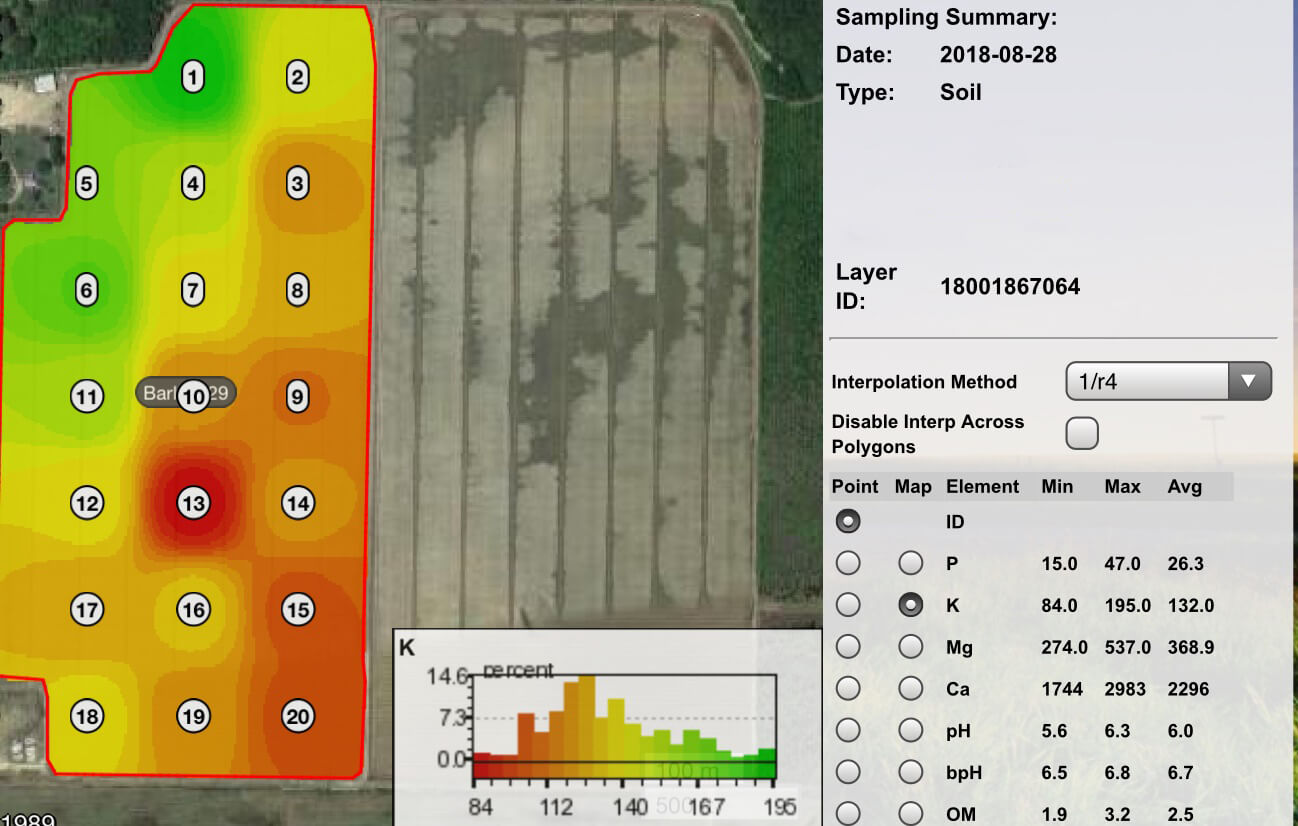Three Reasons You Should Soil Sample This Fall
Oct 24, 2019

The land is your most valuable commodity.
My grandfather told me, “They don’t make any more of that (land),” and there is a lot of truth in that. When you consider the soil that grows your crop, you have to ask yourself if it is being protected in the long-term. Though genetic potential and yields overall have increased over the last 6 years, most crop budgets have tightened up. As a result, we’ve seen fertility programs take the biggest cut and soil nutrients are depleting. However, the same or higher yields are wanted to bridge the gap. So how do we fix that? Grid soil sampling is the first step to making sure your land is prepared to support a profitable crop on a sub-field level. If we protect the land, we can continue to be profitable and push yield potential.You have to know what you have in order to know what you need.
Just as a vehicle needs fuel, plants need fuel to grow. When you have us pull a grid soil sample, the results that come back from the lab give you a look into what are in your fields’ fuel tanks. These results are like the fuel gauge letting you know if you are near empty or if you have enough to get your crops where you need them to go next season. It helps you determine just how much “fuel” is needed to reach your yield goals. We can then build a variable rate prescription map that distributes the nutrients where they’ll best serve your crops.It allows you to customize your plan to fit your goals and maximize profitability.
When you work with your local GreenPoint AG representative, we can help you build a customized fertility plan to prevent mining the soil of its nutrients, while considering your realistic yield goals based on your soils’ capacities. This will insure we are placing resources where they’ll provide the greatest return for your farm. For example, if the soil sample results call for an amount that is more than the soil can hold, we can establish a maximum level for your variable rate prescriptions. You can rest assured that you are putting the necessary crop nutrients where they are needed, further allowing you to save money overall or allowing you to spend those same dollars in higher producing areas of your fields to reach your full field yield goal.This article was written by Savanna Williams, Ag Technology Specialist